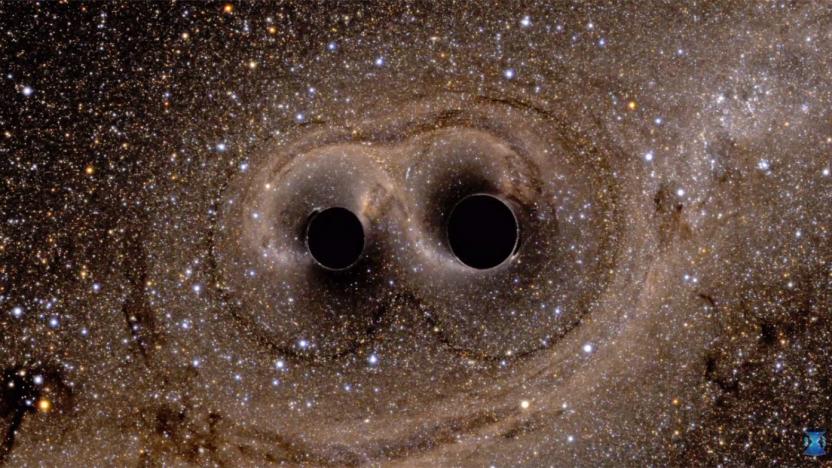GeneralTheoryOfRelativity
Latest

Science confirms that gravitational waves exist
At last, scientists have validated a key part of Einstein's general theory of relativity. The National Science Foundation, Caltech and MIT have confirmed the existence of gravitational waves, or ripples in spacetime. Their two LIGO (Laser Interferometer Gravitational-wave Observatory) detectors measured atomic-scale differences on September 14th, 2015 that point to the collision of black holes (also a new discovery) 1.3 billion years ago, triggering gravity ripples that only just reached Earth. There have long been hints of these waves, but hard evidence has proven elusive until now.

Galaxy cluster research supports Einstein's Theory of Relativity on a cosmic level
In one small win for Einstein, one giant win for mankind, scientists at the Niels Bohr Institute have proved his General Theory of Relativity on a cosmic scale through their research of large galaxy clusters. Accordingly, the clusters -- which are the largest known gravity-bound objects -- have such a strong pull that they should cause light to "redshift," or proportionally increase in wavelength, shifting towards the red end of the visible spectrum. To test it, researchers measured beams from 8,000 clusters, revealing that they do indeed cause a change in light's wavelength, supporting Einstein's theory to a T. One good turn deserves another, right Albert? Armchair cosmologists can hop on over to the source link to learn more.

NASA concludes Gravity Probe B space-time experiment, proves Einstein really was a genius
Well, it looks like Einstein knew what he was talking about, after all. Earlier this week, researchers at NASA and Stanford released the findings from their six-year Gravity Probe B (GP-B) mission, launched to test Einstein's general theory of relativity. To do so, engineers strapped the GP-B satellite with four ultra-precise gyroscopes to measure two pillars of the theory: the geodetic effect (the bending of space and time around a gravitational body) and frame dragging (the extent to which rotating bodies drag space and time with them as they spin on their axes). As they circled the Earth in polar orbit, the GP-B's gyroscopes were pointed squarely at the IM Pegasi guide star, while engineers observed their behavior. In the universe outlined by Einstein's theories, space and time are interwoven to create a four-dimensional web, atop which the Earth and other planetary bodies sit. The Earth's mass, he argued, creates a vortex in this web, implying that all objects orbiting the planet would follow the general curvature of this dimple. If the Earth's gravity had no effect on space and time, then, the position of NASA's gyroscopes would have remained unchanged throughout the orbit. Ultimately, though, researchers noticed small, but quantifiable changes in their spin as they made their way around the globe -- changes that corroborated Einstein's theory. Francis Everitt, a Stanford physicist and principal investigator for the mission, poetically explained the significance of the findings, in a statement: "Imagine the Earth as if it were immersed in honey. As the planet rotated its axis and orbited the Sun, the honey around it would warp and swirl, and it's the same with space and time. GP-B confirmed two of the most profound predictions of Einstein's universe, having far-reaching implications across astrophysics research. Likewise, the decades of technological innovation behind the mission will have a lasting legacy on Earth and in space." The GP-B mission was originally conceived more than 50 years ago, when the technology required to realize the experiment still didn't exist. In fact, the experiment didn't actually get off the ground until 2004, when the satellite was launched into orbit 400 miles above Earth. After spending just one year collecting data (and an impressive five years analyzing the information), NASA has finally confirmed something we always quietly suspected: Einstein was smart. Head past the break to see a more in-depth diagram of how the GP-B gathered its data.


